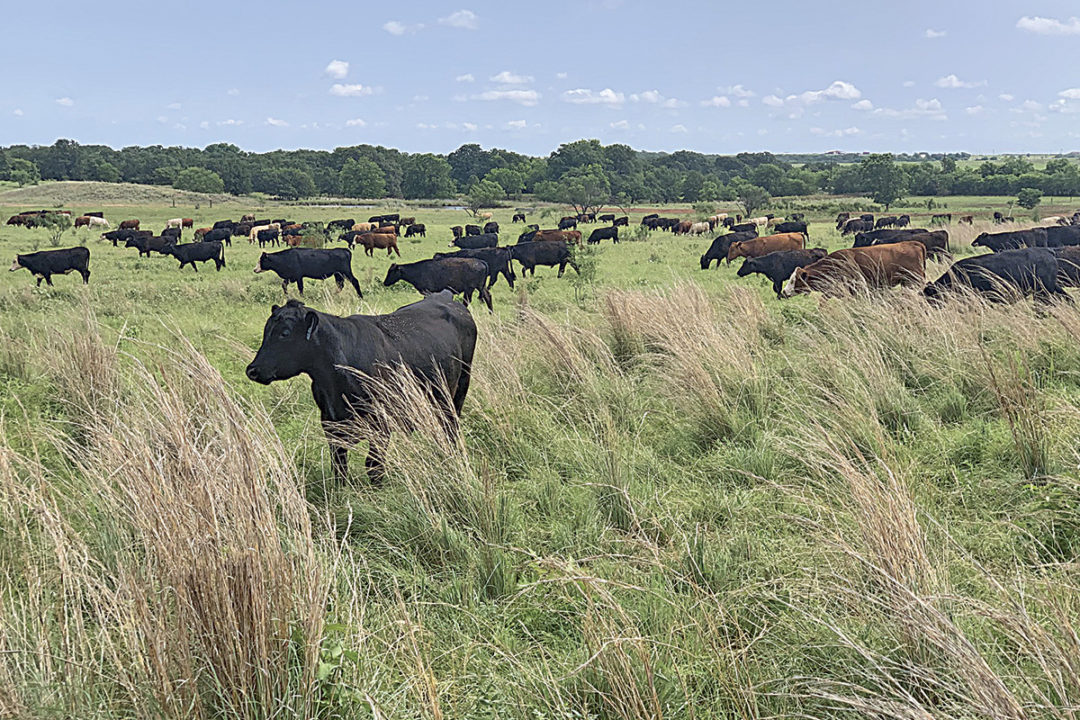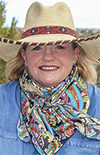“We ain’t done yet!” This declaration was made by Texas A&M head football coach Jimbo Fisher regarding his team’s quest to win a coveted national championship – a worthy goal for a college football program. Without significant progress toward that goal, Fisher’s job would be in immediate jeopardy. I believe sports pundits call it “on the hot seat.”
Of course, he was not talking about grazing management, or soil health or brush management. But he darn sure could have been! How much progress have we seen on U.S. rangelands toward our goals? Like many collegiate athletic programs, we have thrown millions, even billions of dollars at the process and have seen little, if any, significant progress. A drive across any state with a significant amount of native rangeland tells the tale pretty quickly. Land with adequate forage, minimal bare ground, reduced brush cover and a diversity of vegetation can easily be spotted at 70 mph. As can continuously grazed rangelands with lots of bare ground – the land that invokes those passing by to say, “What are those cattle eating, anyway?” It can be very disheartening.
Our tax dollars have funded an alphabet soup of programs aimed at the greater good of promoting healthy ecosystems: GPCP, CRP, EQIP, CSP, etc. Our extension and research programs have researched, demonstrated and hosted tours. National and state grazing land coalitions try to spread the word of sound stewardship with peer-to-peer engagement. A few private consultants have made businesses centered around ranch profitability, with the keys being good grazing management and healthy ecosystems.
But it is clear that “we ain’t done yet.” Oh, sure, some programs have yielded results. Success stories dot the landscape from coast to coast. The National Cattleman’s Beef Association Environmental Stewardship Awards program recognizes the best of the best in seven regions across the U.S. Dedicated ranchers have combined some programs with wise management to vastly improve the health of the ecosystem, as well as the health of their bank accounts. But a long, hard, honest look reveals that much native rangeland is in no better shape than it was before the various programs.
Why haven’t we made better progress? Are we simply putting Band-Aids on damaged rangelands and not expecting real healing? Are those Band-Aids covering up poor management? Are we lured by commodity prices and the promise of a financial windfall in a year with good cattle prices to convince us that we need to “take all that forage” as opposed to honoring the principles of soil health? Conversely, are we desperate in those tough years and think we need to “get all we can,” even if that financial windfall is temporary or the perceived need to get it all will cost us dearly in the long term? Is the banker too eager to lend us more money to buy livestock – maybe more than we need?
I am convinced that the answer is grazing management. All the Band-Aids and programs in the world will not fix anything without sound grazing management. Grazing management that includes rest for the land, which is achieved by rotating livestock. Doing the simple things that lead to better soil health will grow more forage over the long haul. We know what to do: Protect the soil, minimizing bare ground. Minimize disturbance. Encourage plant diversity. Keep living roots in the soil. Incorporate grazing livestock. Most livestock producers are getting two of these five principles done: They are minimizing soil disturbance because they are not plowing, and they are incorporating livestock into the ecosystem.
That’s a score of 40%. A failing grade.
They are leaving too much bare ground because they continually graze, often with too many animals, which leads to less plant diversity, fewer living roots in the soil, and far too much bare ground.
Those practices paid for by the many programs are designed to support the principles. Let me say that again: The practices are designed to support the principles. They are not meant to be a Band-Aid. But if the principles are not honored and respected, the practices will yield minimal, temporary benefits and need to be repeated, again and again.
At some point, the taxpayers of this country, like alumni of big colleges, are going to demand some accountability. How do we convince people that with better grazing management they will grow more forage, leading to more bucks in the bank and long-term sustainability for their operations? Do we just do like the big colleges and hire the next big-name coach, add on to the stadium or, in our case, roll out the next program? What if your job as a rancher was in jeopardy because you were not producing progress toward a healthy ecosystem, your equivalent of a winning team? The day can indeed come when you are on the hot seat at the office of your banker. Like university alumni, the banker may not be the best judge of your job performance, but he’s probably the one you must satisfy. We are plunging headlong into a world where the public is going to be aware of the job we are doing on the landscape and have some expectations, much like the university alumni and the banker. Those Band-Aids may prolong the ability to survive on an unhealthy ecosystem.
It is time to take a hard look at what we are doing, or not doing, on our rangelands. Healthy ecosystems equal profitable ranches. Manage for the principles of healthy ecosystems, and the results will speak for themselves. As my friend Frank Price of Sterling City, Texas, says, “The better it gets, the faster it gets better.” What we do on the rangeland is not easy, but it can be simple. And it matters – to the banker, to your family, to the football-loving public. It matters.
I am going to take Jimbo Fisher’s words to heart. Folks, we ain’t done yet!








